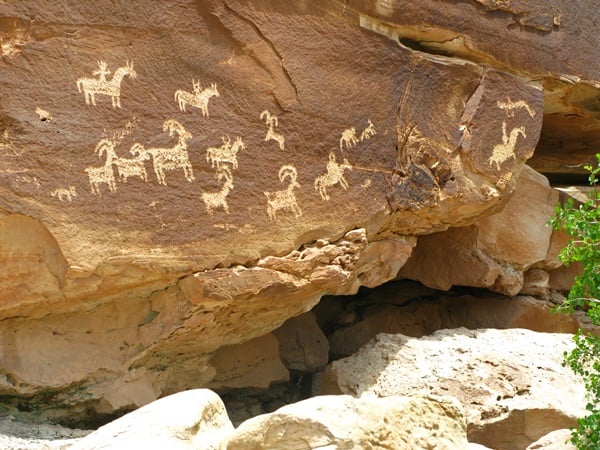Law & Politics
California Man Defaces Historic Site In Act of Drunken Vengeance
He faces up to ten years in federal prison for it.

He faces up to ten years in federal prison for it.

Eileen Kinsella

A 58-year-old California man who desecrated an archaeological site while intoxicated, because he was angry at a co-worker, faces up to ten years in federal prison, according to a report in Courthouse News.
Christopher Harp, of Bakersfield, pleaded not guilty on October 23 to a grand jury indictment charging him with “depredation of public lands” in Sequoia National Forest. Harp allegedly defaced an ancient Indian petroglyph—a carving of bighorn sheep—by spray painting vulgar messages on it.
Angry at a colleague, he painted the phrase “blow jobs 24-7” and included the colleague’s phone number, which authorities used to track down the purported culprit. On two prior occasions, he had physically assaulted the co-worker. This time, he decided to put his phone number on the rocks along with the vulgar messages, instead of beating him up again, he said.
Native American rock art is protected by the Antiquities Act, as Ohio State University archaeology students recently learned, and it illegal to deface public lands regardless of the presence of ancient art. Artists such as André Saraiva, who left his signature graffiti symbol on a rock in California’s Joshua Tree National Park, and Casey Nocket, who documented the paintings she left in a least 10 national parks on social media this past summer, have been widely criticized as vandalism
In an affidavit, US Forest Service Special Agent Brian Adams described investigating the Sequoia National Forest incident, which allegedly happened in September.
“I located black graffiti sprayed on numerous rocks for a distance of approximately 100 yards along the south side of Rabbit Island. The graffiti was done in a thick black substance and did not appear to be made by paint…. The phone number — – —- was sprayed on a rock along with the caption ‘blow jobs 24-7.’ Other vulgar pictures, arrows and designs, were painted on other rock surfaces.” These included a logo that matched one associated with the business where Harp worked.
When Adams tracked down Harp at an address in Bakersfield, Harp admitted to the vandalism, describing the paint can he used as well as the fact that he was “pissed off” at his co-worker at the time. When asked if he remembered what he had written, Harp said, “somebody was sucking a dick,” according to Adams.
Harp said he was very drunk when he committed the vandalism act as he had been drinking beer and vodka all day. He also said it was done at nighttime, that it was very dark and that he had no idea of the material he was spray painting on.
Adams says he was informed by another specialist that the cost of removing the graffiti without damaging the petroglyph would exceed $1,000.
According to the Courthouse News report, the site, known as Rabbit Island, was once home to a large Tubatulabal Indian village. The Tubatulabal have lived in the Kern River Valley in the Sierra Nevada for at least 3,000 years, and many are enrolled in the Tule tribe now. The word Tubatulabal, itself has a connection to pine nuts, a major food source for prehistoric people, along with acorns.